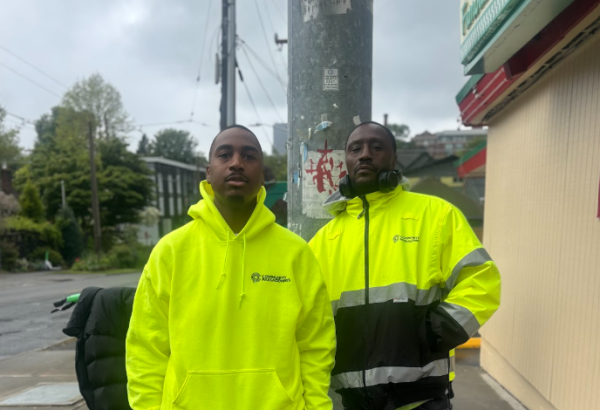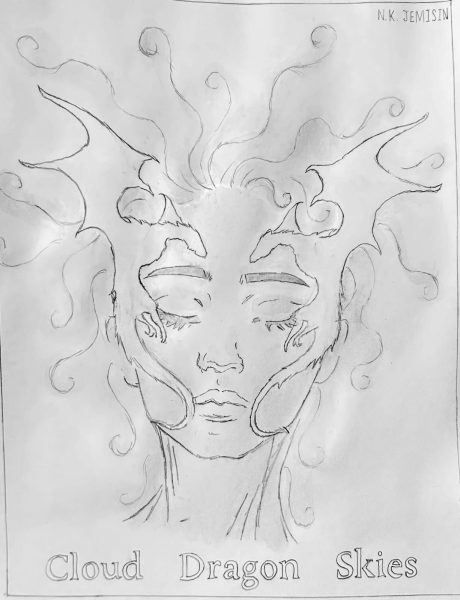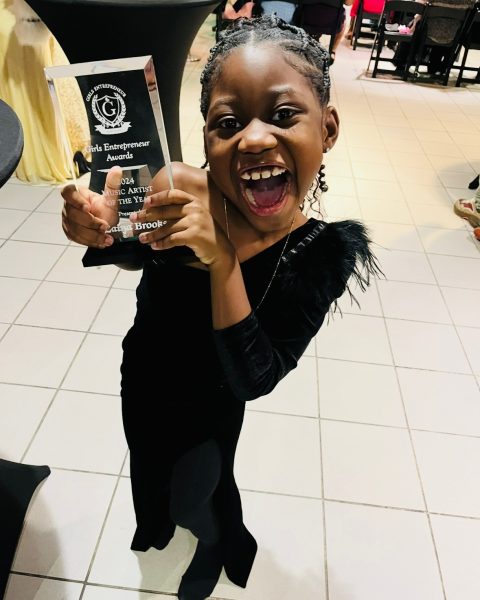Black Music
Jazz
Jazz first emerged in the early 1900s, drawing from West African musical traditions, spirituals sung by enslaved Black people in the Americas, and European classical music. The southern city of New Orleans played an enormous role in the creation of this genre, as it was a gateway between Black music traditions in continental North America and in the Caribbean. In the 1890s, Black ragtime composers like Scott Joplin reached wide audiences; a decade later, instrumentalists like trumpeter Buddy Bolden were popular in New Orleans. Black pianist Jelly Roll Morton composed some of the first written jazz music, and big bands like Duke Ellington and Count Basie’s orchestras began playing blues, swing, and other types of large ensemble jazz from the 1920s onward.
However, not all jazz musicians like to define themselves by the genre. Bandleader Duke Ellington referred to himself as a performer of “American music” and used the term “beyond category” to describe his creative approach to performance and composition.
After big bands lost popularity in the late 1940s, the jazz styles of bebop and fusion emerged. Jazz performers have continued to develop the genre in creative ways to this day, and many contemporary musicians use the umbrella term Black American Music (abbreviated BAM) to describe the wide variety of music, much of it jazz, that owes its roots to Black music.
R+B
Rhythm and Blues, more commonly referred to as “R&B,” is an all-encompassing music genre that emerged in the 1940s and incorporates elements of jazz, blues, pop, and gospel amongst many other subgenres. Previously referred to as “Harlem Hit Parade,” “Sepia,” and “Race” as a means to generalize all African American music in the post-World War II era, R&B was seen as a less demeaning term for secular Black contemporary music.
Over the last half century, the R&B genre has referred to blues, rock and roll, gospel and soul, funk, and finally all at once. Characterized by its heavy, consistent drum patterns, this genre primarily makes use of piano, guitar, saxophones, other horns, and multiple vocalists. Early artists such as Johnny Otis, Ray Charles, and Ruth Brown topped charts throughout the 1950s. In the 1960s and 1970s, R&B became popular across the United States, achieving recognition with its own category in the Grammy awards as the genre’s scope broadened to include disco, one of the most popular music styles of the decade.
In the current music scene, rhythm and blues is still known for its soulful vocal stylings, use of piano, and strong backing beats. Current artists within the R&B genre include Beyoncé, Stevie Wonder, and Alicia Keys, who draw upon the traditional sounds of early rhythm and blues while updating the genre with modernized instruments.
Rock
For a genre that originated nearly entirely from Black musicians, there is an extreme lack of diversity in the modern rock industry. While white artists who adopted rock in the 1950s like Elvis Presley are the names that come to mind in association with the genre’s roots, the true origins lie elsewhere. The recognizable rock sound known today grew out of the blues of the Deep South, along with other influences including gospel and country music. Early rock and roll artists like Bo Diddley, Sister Rosetta Tharpe, and Chuck Berry laid the groundwork for the genre that would become hugely popular from the 1940s over the next eighty years. In its early days, rock music was played by Black American musicians and it quickly began to attract the attention of white audiences. Since then, some of the most influential Black rock artists include Tina Turner, Jimi Hendrix, Prince, and Little Richard. Elvis Presley is undeniably one of the most well-recognized early rock musicians, and though he never outright denounced the Black artists to which he owed his signature musical style, he profited heavily upon a genre that he was credited with inventing when in fact it was appropriated from Black artists who got very little commercial success in comparison.
Country
Just like rock, jazz, pop, and hip-hop, almost every aspect of country music is an adaptation of African and African-American traditions, from its repertoire to its vocal and instrumental techniques. Black artists have been influential behind the scenes through every stage of country music’s development.
Rock, punk, bluegrass and country music stem from the trunk which is blues. This tree’s roots date back to the 400 years of the middle passage where work songs, field hollers, shouts, chants, arhoolies, and spirituals rang out amongst enslaved people. In a documentary called “Country Music,” Ken Burns traces a hymn by a Black minister, “When the World is on Fire,” as it was turned into the Carter Family’s 1928 hit “Little Darling Pal of Mine,” which then became Woody Guthrie’s quintessential “This Land is Your Land.”
The banjo is another example of how deeply rooted country music is in African culture and tradition. The instrument is a descendant of West African lutes, made from gourds, that were brought to America by enslaved Africans and became a central part of music and culture in the South. Soon, the instrument was spread to white audiences through minstrel and blackface shows. This was the birth of Hillbilly music, an early form of what we now call country music.
Black musicians have been pushed to the margins of country music, and the industry continues to put the spotlight on white artists. As listeners, we have power over whose voices we choose to hear. If you haven’t already, here are some spectacular black country singers to give a listen: Allison Russell, The War and Treaty, Jimmie Allen, Mickey Guyton, Darius Rucker, Charley Pride, Brittney Spencer, Kane Brown, Amethyst Kaih, Shy Carter, Blanco Brown, Willie Jones, and Yola.
Rap
Rap originated in the Bronx, New York in the 1970s and was expanded from Masters of Ceremonies who often rhymed over instrumentals when introducing DJs at parties. The tradition of rhythmic storytelling dates back to West African Griots who are keepers of different families’ and village’s oral history.
Bronx-living Jamaican-Americans DJ Kool Herc and Coke La Rock were rap pioneers who became popular in the party scene beginning in 1973. At rap’s onset, the DJ was seen as more important than the MC (master of ceremonies) who rhymed over the looped tracks, but this changed with the “golden age” of rap. The Golden Age of rap, beginning in the mid 1980s, was characterized by increased complexity in lyrics and rhyme schemes. It was also when hip-hop broke into the mainstream; popular artists of this time period were Run-DMC and Rakim.
Hip-hop has developed unique styles in different parts of the country. In the late 1980s, the group NWA popularized the gangster rap style which still persists to this day. The west and east coasts developed different, competing styles. In the mid 1990s, Tupac Shakur and the Notorious B.I.G. were on opposing sides of this feud fueled by fans and record labels. The competition culminated in the death of both artists which had a sobering effect on the feud.
Atlanta has been a recent crucible for some of rap’s most popular sounds. Trap music was created in Atlanta in the 2000s and is characterized by instrumentals that extensively use hi-hats and heavy kicks. The subgenre’s polarizing lyrics about selling drugs and street violence have turned off some fans, but the genre has achieved large popularity. Mumble rap originated in the 2010s and was popularized through the streaming site Soundcloud, which allows anyone to upload their music for free. Artists like Lil Uzi Vert and Young Thug have become some of the biggest names today, pioneering the genre despite some older fans’ criticisms that they lack lyrical depth.
Today, hip-hop is the most popular genre in the United States, according to streaming numbers, and is likely to continue growing in coming years.





